SsangYong Korando vs Maxus Euniq 5 – Differences & prices compared
Compare performance, boot capacity, efficiency and price at a glance.
Find out which car is the better choice for you – SsangYong Korando or Maxus Euniq 5?
Costs and Efficiency:
When it comes to price and running costs, the biggest differences usually appear. This is often where you see which car fits your budget better in the long run.
SsangYong Korando has a significantly advantage in terms of price – it starts at 27000 £, while the Maxus Euniq 5 costs 46400 £. That’s a price difference of around 19408 £.
In terms of energy consumption, the advantage goes to the SsangYong Korando: with 16.80 kWh per 100 km, it’s noticeable more efficient than the Maxus Euniq 5 with 22.60 kWh. That’s a difference of about 5.80 kWh.
As for range, the Maxus Euniq 5 performs slight better – achieving up to 360 km, about 21 km more than the SsangYong Korando.
Engine and Performance:
Power, torque and acceleration are the classic benchmarks for car enthusiasts – and here, some clear differences start to show.
When it comes to engine power, the SsangYong Korando has a hardly perceptible edge – offering 190 HP compared to 177 HP. That’s roughly 13 HP more horsepower.
In terms of top speed, the SsangYong Korando performs somewhat better – reaching 191 km/h, while the Maxus Euniq 5 tops out at 160 km/h. The difference is around 31 km/h.
There’s also a difference in torque: SsangYong Korando pulls slightly stronger with 360 Nm compared to 310 Nm. That’s about 50 Nm difference.
Space and Everyday Use:
Cabin size, boot volume and payload all play a role in everyday practicality. Here, comfort and flexibility make the difference.
Seats: Maxus Euniq 5 offers slightly more seating capacity – 6 vs 5.
In curb weight, SsangYong Korando is a bit lighter – 1517 kg compared to 1810 kg. The difference is around 293 kg.
In terms of boot space, the SsangYong Korando offers convincingly more room – 551 L compared to 0 L. That’s a difference of about 551 L.
When it comes to payload, Maxus Euniq 5 a bit takes the win – 541 kg compared to 463 kg. That’s a difference of about 78 kg.
Who wins the race?
The SsangYong Korando proves to be outperforms in nearly all aspects and therefore becomes our DriveDuel Champion!
SsangYong Korando is the better all-rounder in this comparison.
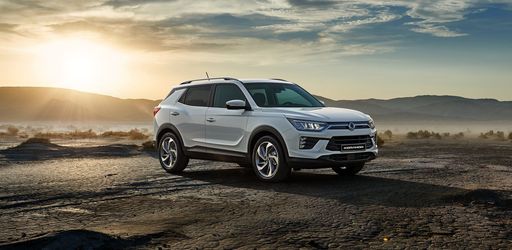
SsangYong Korando
SsangYong Korando
The SsangYong Korando offers a blend of contemporary design and practicality, making it an appealing choice for urban adventurers. Its spacious interior and comfortable seating ensure a pleasant driving experience for both driver and passengers. With its reliable performance and advanced features, the Korando stands out in the competitive SUV market.
details @ Ssangyong
@ Ssangyong
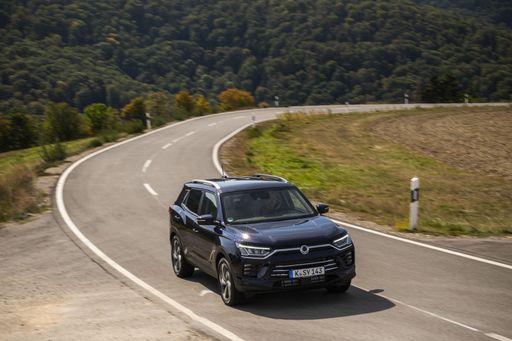 @ Ssangyong
@ Ssangyong
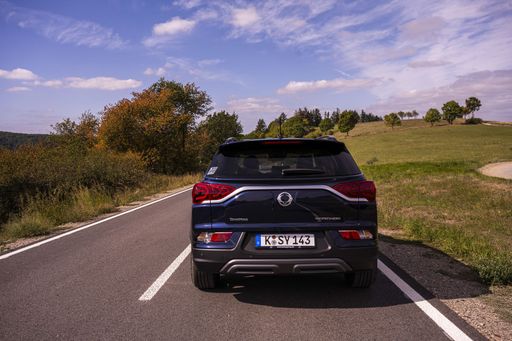 @ Ssangyong
@ Ssangyong
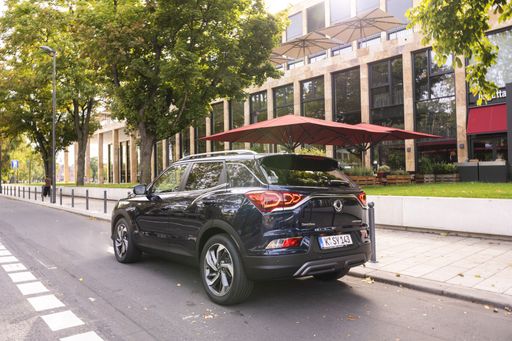 @ Ssangyong
@ Ssangyong
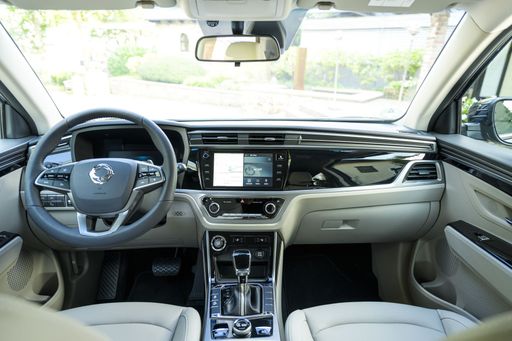 @ Ssangyong
@ Ssangyong
Maxus Euniq 5
The Maxus Euniq 5 stands out as a versatile and environmentally friendly option in the MPV market. It combines sleek, modern design elements with a spacious interior, making it ideal for families or those needing extra space. Its electric powertrain not only ensures a smooth driving experience but also reflects a commitment to sustainability.
details

|
|
|
|
|
Costs and Consumption |
|
|---|---|
|
Price
27000 - 42000 £
|
Price
46400 £
|
|
Consumption L/100km
7.5 - 8.6 L
|
Consumption L/100km
-
|
|
Consumption kWh/100km
16.80 kWh
|
Consumption kWh/100km
22.60 kWh
|
|
Electric Range
339 km
|
Electric Range
360 km
|
|
Battery Capacity
-
|
Battery Capacity
-
|
|
co2
0 - 197 g/km
|
co2
0 g/km
|
|
Fuel tank capacity
50 L
|
Fuel tank capacity
-
|
Dimensions and Body |
|
|---|---|
|
Body Type
SUV
|
Body Type
MPV
|
|
Seats
5
|
Seats
6
|
|
Doors
5
|
Doors
5
|
|
Curb weight
1517 - 1840 kg
|
Curb weight
1810 kg
|
|
Trunk capacity
551 L
|
Trunk capacity
0 L
|
|
Length
4450 - 4465 mm
|
Length
4825 mm
|
|
Width
1870 mm
|
Width
1825 mm
|
|
Height
1620 - 1645 mm
|
Height
1800 mm
|
|
Max trunk capacity
1248 L
|
Max trunk capacity
-
|
|
Payload
410 - 463 kg
|
Payload
541 kg
|
Engine and Performance |
|
|---|---|
|
Engine Type
Petrol, Electric
|
Engine Type
Electric
|
|
Transmission
Manuel, Automatic
|
Transmission
Automatic
|
|
Transmission Detail
Manual Gearbox, Automatic Gearbox, Reduction Gearbox
|
Transmission Detail
Reduction Gearbox
|
|
Drive Type
Front-Wheel Drive, All-Wheel Drive
|
Drive Type
Front-Wheel Drive
|
|
Power HP
163 - 190 HP
|
Power HP
177 HP
|
|
Acceleration 0-100km/h
8.40 s
|
Acceleration 0-100km/h
-
|
|
Max Speed
156 - 191 km/h
|
Max Speed
160 km/h
|
|
Torque
260 - 360 Nm
|
Torque
310 Nm
|
|
Number of Cylinders
4
|
Number of Cylinders
-
|
|
Power kW
120 - 140 kW
|
Power kW
130 kW
|
|
Engine capacity
1497 cm3
|
Engine capacity
-
|
General |
|
|---|---|
|
Model Year
2021 - 2023
|
Model Year
2023
|
|
CO2 Efficiency Class
F, G, A
|
CO2 Efficiency Class
A
|
|
Brand
SsangYong
|
Brand
Maxus
|
What drive types are available for the SsangYong Korando?
Available configurations include Front-Wheel Drive or All-Wheel Drive.
The prices and data displayed are estimates based on German list prices and may vary by country. This information is not legally binding.
